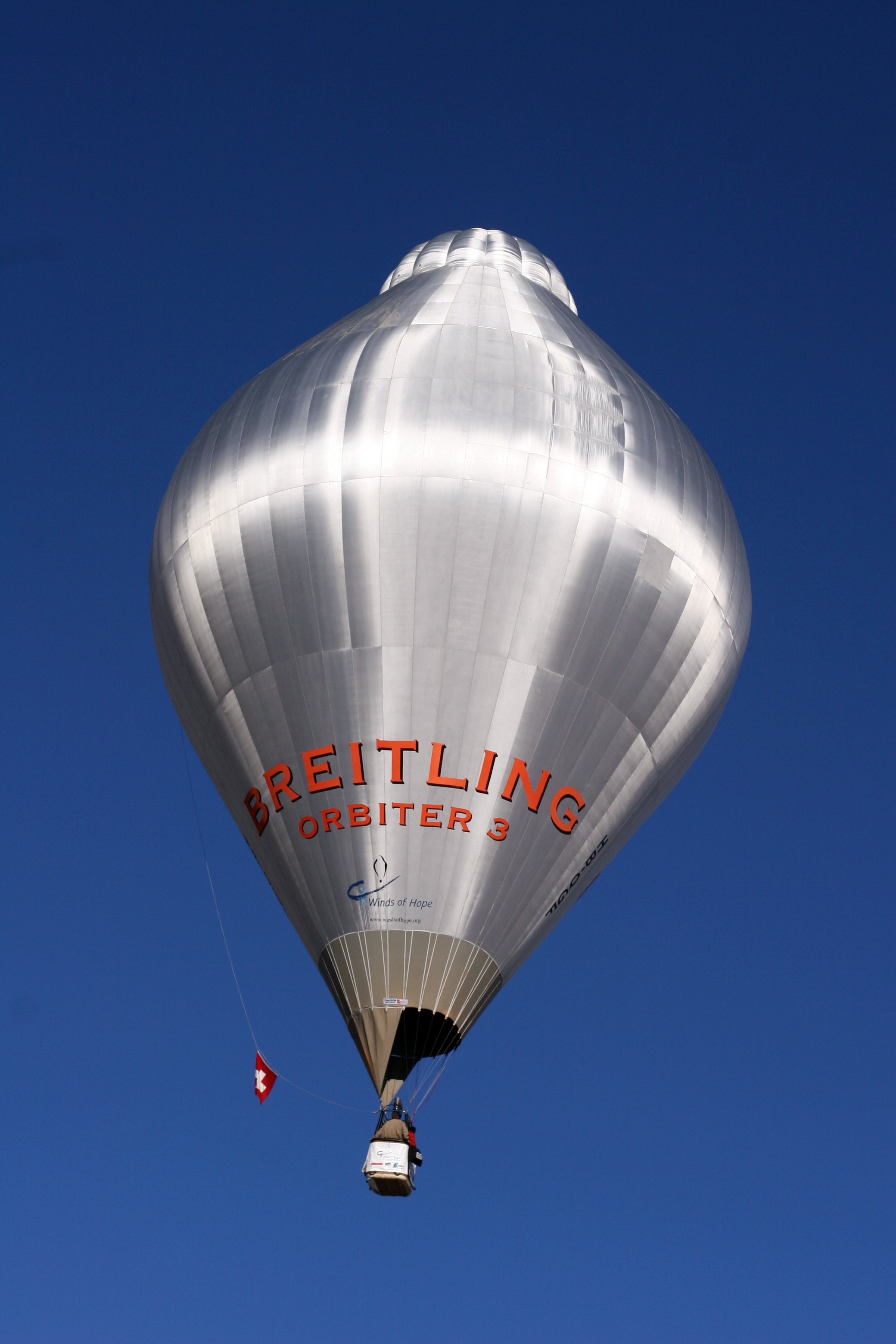Rozière balloon on:
[Wikipedia]
[Google]
[Amazon]
 A Rozière balloon (or simply Rozière) is a type of hybrid balloon that has separate chambers for a non-heated lifting gas (such as
A Rozière balloon (or simply Rozière) is a type of hybrid balloon that has separate chambers for a non-heated lifting gas (such as
 A Rozière balloon (or simply Rozière) is a type of hybrid balloon that has separate chambers for a non-heated lifting gas (such as
A Rozière balloon (or simply Rozière) is a type of hybrid balloon that has separate chambers for a non-heated lifting gas (such as hydrogen
Hydrogen is a chemical element; it has chemical symbol, symbol H and atomic number 1. It is the lightest and abundance of the chemical elements, most abundant chemical element in the universe, constituting about 75% of all baryon, normal matter ...
or helium
Helium (from ) is a chemical element; it has chemical symbol, symbol He and atomic number 2. It is a colorless, odorless, non-toxic, inert gas, inert, monatomic gas and the first in the noble gas group in the periodic table. Its boiling point is ...
) as well as for a heated lifting gas (as used in a hot air balloon or Montgolfière). The design was created by Jean-François Pilâtre de Rozier (1754–1785).Shectman, p. 26.
A Rozière-type balloon has the advantage of partial control of buoyancy
Buoyancy (), or upthrust, is the force exerted by a fluid opposing the weight of a partially or fully immersed object (which may be also be a parcel of fluid). In a column of fluid, pressure increases with depth as a result of the weight of t ...
with much less use of fuel than a typical hot air balloon. This reduction of fuel consumption has allowed Rozière balloons and their crew to achieve very long flight times, as much as several days or even weeks.
Early endeavours
The first Rozière was built for an attempt at crossing theEnglish Channel
The English Channel, also known as the Channel, is an arm of the Atlantic Ocean that separates Southern England from northern France. It links to the southern part of the North Sea by the Strait of Dover at its northeastern end. It is the busi ...
on 15 June 1785. Contemporary accounts state that the balloon caught fire, suddenly deflated and crashed near Wimereux in the Pas-de-Calais, killing Rozier, who was riding the balloon.
Modern era
Today's Rozière designs use non-flammable helium rather than hydrogen. Their primary application is for extremely long duration flights. The first successful Atlantic crossing was made 31 August to 2 September 1986, Newfoundland to the Netherlands, by Brink, Brink and Hageman in the balloon ''Dutch Viking''. During February 1992, the first east-to-west Atlantic crossing was achieved by Feliu and Green. Four Cameron-R77s made Atlantic crossings, west to east, during September 1992. One was co-piloted by Bertrand Piccard. Australian adventurer Dick Smith and his co-pilot John Wallington made the first balloon voyage across Australia, in another Cameron-R77 Rozière, ''Australian Geographic Flyer'', on 18 June 1993, earning the 1995 Montgolfier Diploma. Steve Fossett made the first successful Pacific crossing during February 1995. On 27 February 1999, while they were trying to circumnavigate the world by balloon, Colin Prescot and Andy Elson set a new endurance record after flying in a Rozière combined helium and hot air balloon (the ''Cable & Wireless'' balloon) for 233 hours and 55 minutes."Balloonists Soar Into History Books." ''Contra Costa Times.'' March 21, 1999. Then on 21 March of that year, Bertrand Piccard and Brian Jones became the first to circumnavigate theEarth
Earth is the third planet from the Sun and the only astronomical object known to Planetary habitability, harbor life. This is enabled by Earth being an ocean world, the only one in the Solar System sustaining liquid surface water. Almost all ...
, in a Rozière known as the '' Breitling Orbiter 3'', in a flight lasting 477 hours, 47 minutes.
On 4 July 2002, after five previous attempts, Steve Fossett became the first to achieve a round the world solo flight also in a Rozière named the '' Spirit of Freedom''.Glenday, p. 179.
On 23 July 2016, Fyodor Konyukhov completed a round-the-world solo flight in a Rozière in just over 11 days, setting a new world record.
See also
* Timeline of hydrogen technologies * List of firsts in aviationReferences
Bibliography
*Davis, Jeffrey R.; Johnson, Robert; Stepanek, Jan; and Fogarty, Jennifer A. ''Fundamentals of Aerospace Medicine.'' Philadelphia: Lippincott Williams & Wilkins, 2008. *Federal Aviation Administration. United States Department of Transportation. ''Balloon Flying Handbook.'' FAA-H-8083-11A. Washington, D.C.: U.S. Government Printing Office, 2007. *Glenday, Craig. ''Guinness World Records 2011.'' New York: Bantam Books, 23 11. *Shectman, Jonathan. ''Groundbreaking Scientific Experiments, Inventions, and Discoveries of the 18th Century.'' Westport, Conn.: Greenwood Press, 2003. {{DEFAULTSORT:Roziere balloon Balloons (aeronautics)